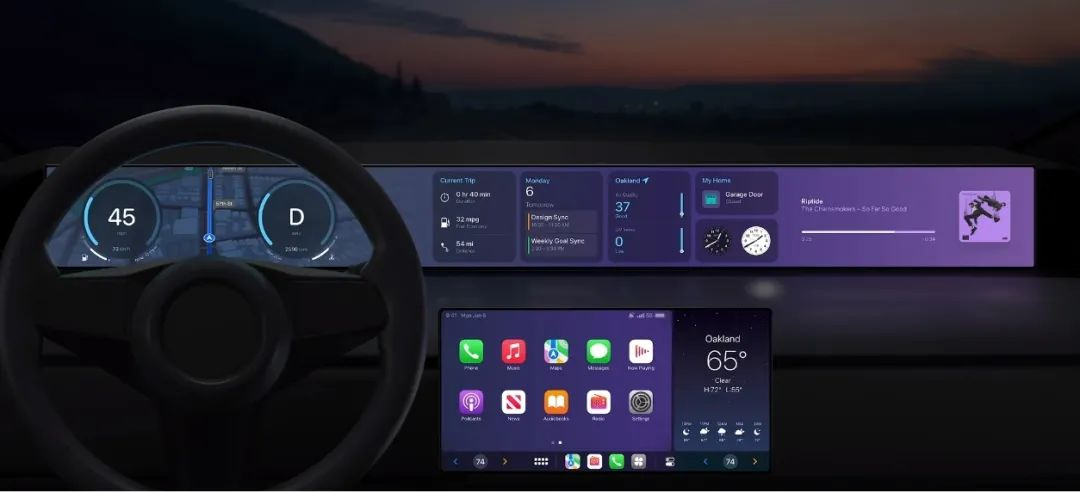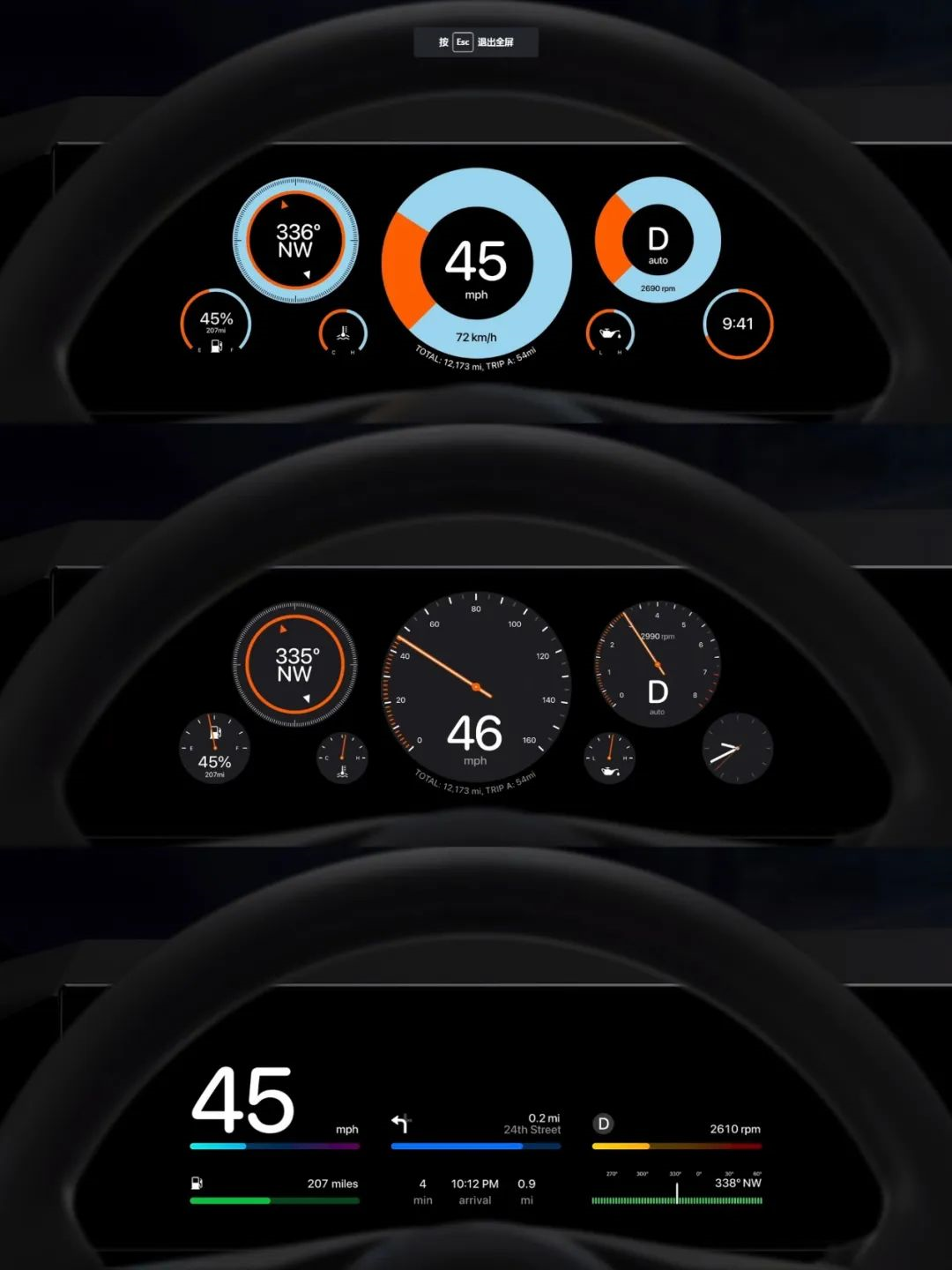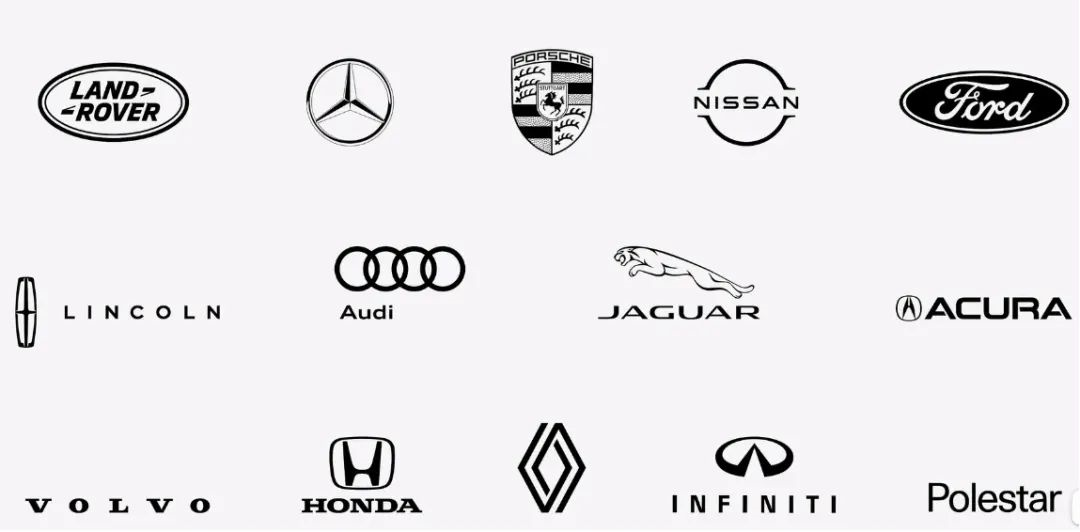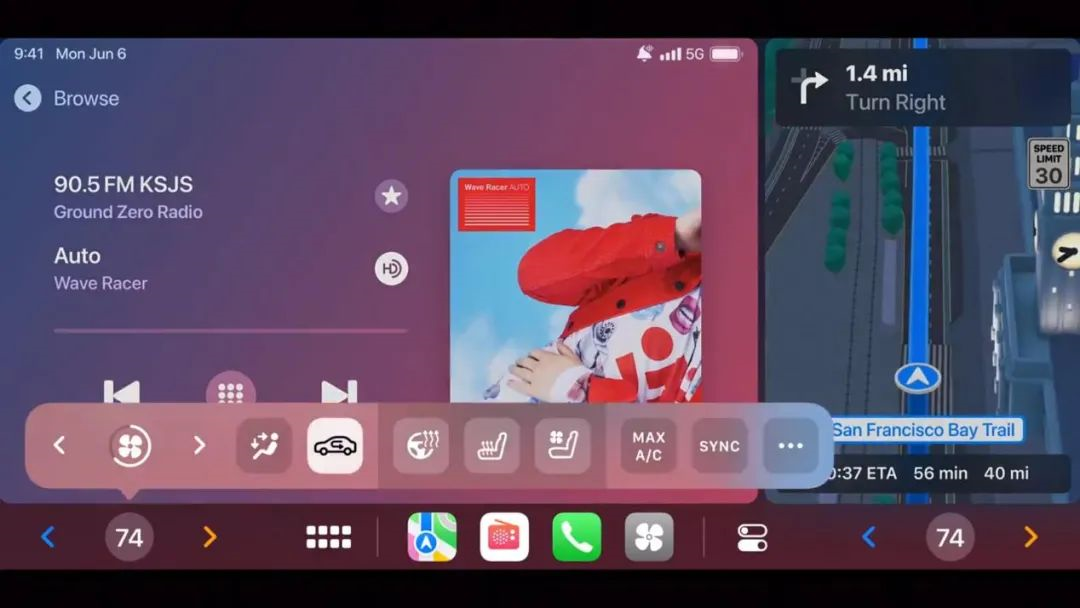Article by: Leng Zelin
Edited by: Wang Pan
Earlier today, Apple held its annual WWDC 2022 (Worldwide Developers Conference).
Apart from the announcement of new products such as the iOS16 system, MacBook, and M2 chip, the less than 4-minute-long CarPlay introduction caused quite a stir.
Due to major changes in the entire cabin system in the past two years, the interior design of cars has also become different.
For example, Tesla first removed the instrument panel and physical buttons, causing most of the operations to be completed on the central control screen.
In addition, many car companies have added multiple screens to the interior of the car to carry different functions. For example, the latest model L9 of the Ideal Automobile is equipped with as many as 5 screens (HUD, driving interaction screen, central control, passenger entertainment, and rear entertainment).

Therefore, CarPlay showcased its multi-screen display capabilities at the conference.
The new CarPlay can provide content on all screens while maintaining a unified style, supporting all screens in the car, and is not limited by the shape or layout of the screen. In addition, iPhone widgets can also be displayed on the car’s screen and dashboard.
Using the above picture as an example, CarPlay is displayed on the car’s dashboard, central control, and passenger entertainment screen.

In the CarPlay dashboard interface, information such as speed, RPM, fuel level, and temperature will be displayed, and it has a design similar to the Apple Watch face with multiple dashboard styles to switch between.
Of course, the most important thing is that the new CarPlay can directly control the car’s hardware devices such as the radio or air conditioning, going beyond simply “mapping” and delving into the control of the vehicle’s functions, which can be seen as a “covering” of the original car machine system to some extent.
In the past, CarPlay’s functions were relatively limited. It only served as an extension of the phone, with relatively fewer supported functions and apps. For example, it only supported Apple’s native maps for the first four years after its launch.
The reason for this is that the competition among the mainframe manufacturers in the car machine system level has not been strong in the past, and consumers have also become accustomed to buying a phone holder and calling it a day.The benefits of this are that traditional automakers may choose to “lie flat” and adopt CarPlay directly on the in-car system. Except for the still immature autonomous driving system, the emergence of the new CarPlay provides an opportunity for traditional auto companies to pull the competition of new energy vehicles back to the vehicle itself, without competing with new forces in areas where they are not good at.
Since traditional auto companies will not define smart cars, Apple, as a technology giant, may directly help you define it.

Therefore, at the press conference, Apple showed a decent “circle of friends”. Apart from Volvo and Lynk & Co. (which has Geely’s shadow behind it), all the rest were foreign old-brand automakers.
On the other hand, automakers also seem to be quite anxious. Apple has just released the new generation of CarPlay and Polestar announced today that it will support OTA CarPlay functions later this month, and the next generation of CarPlay will also be available in future Polestar vehicles.
And Apple revealed that there will be models equipped with this system on the market later in 2023.
However, the fact that the new CarPlay is welcomed among foreign auto companies does not mean it will be welcomed in the domestic market.
CarPlay is not easy to penetrate the domestic market
At this Apple event, it was clearly stated that CarPlay will be deeply integrated with the vehicle hardware system, so there is no need to exit and directly control the vehicle’s radio or air conditioning. But it did not mention whether it will take over the entire vehicle cockpit control.

In the official demonstration picture, it is clear that there are several options, from left to right should be wind speed, air direction, interior circulation, heated steering wheel, heated seats, and seat ventilation.
Since it has escaped from simple mapping and intervened in vehicle function control, CarPlay needs to consider more issues.
The changes in CarPlay’s functions often follow the upgrade of the phone system. When CarPlay intervenes in vehicle control, does it mean that the upgrade of iOS will be equivalent to automotive OTA?
In the domestic market, in the past two years, relevant departments have issued various documents to regulate automaker OTA, such as requiring reporting to the relevant departments before upgrading, and submitting reports on the implementation of specific upgrade activities after upgrading. At the same time, clear requirements have been made for the boundaries between OTA and recalls.In April of this year, Tesla issued a “recall” for 14,000 imported and domestically produced high-performance Model 3s. Of course, this recall is not being done through a factory return, but rather through OTA updates to fix the issue of “speed units (KM/H) missing in race mode speed display.”
Currently, Apple CarPlay also has instrument display features. So, will iOS bugs potentially lead to carmakers bearing the blame of a “recall?”
Furthermore, if carmakers give up building and upgrading their own in-car systems, due to Apple’s closed ecosystem, they will return to traditional models where they cannot decide on OTA content and frequency, making it easy for them to fall behind in certain functions.
Currently, Apple and Huawei are the main players among smartphone manufacturers in the smart cockpit market. Apple has hardware, iOS, and CarPlay, while Huawei has hardware, Harmony OS, and HiCar.
The difference between the two is that Huawei, as a supplier, has at least openly declared that it will not enter the carmaking industry for the next several years, mainly because it does not want to break its relationship with carmakers. Apple’s automotive journey has been bumpy, but it has always been its main direction.
It is not difficult to see that the emergence of Apple’s car will add a hint of competitive meaning to its supply relationship with major carmakers.
Will carmakers be willing to act as judges and athletes at the same time, and be satisfied with only being vassals? At least the majority of domestic carmakers are not willing to do so, because even Huawei, which does not build cars, is seen as one of the parties seizing the “soul” by major carmakers.
On the other hand, since the iOS system can only be installed on Apple products, and CarPlay only supports connections with Apple devices, the market share of the mobile phone market largely determines Apple CarPlay’s share in the in-car system market.
At the press conference, Apple announced two statistics: 98% of cars in the United States can use CarPlay, and 78% of U.S. buyers said they would only consider purchasing a car with CarPlay.
According to Counterpoint data, in 2021, iPhone had market shares of 55%, 53%, 47%, and 56% in the US market in each quarter respectively, and even reached 65% in market share in the fourth quarter of 2020.
In the domestic market, Apple’s market share was 16% last year. In other words, the remaining 84% were dominated by the Android system. Although Apple CarPlay can reduce the threshold for software use, most consumers in China are not familiar with the Apple system.
However, Apple still occupies an absolute position among high-end consumers, with NIO CEO Li Bin revealing that more than 50% of NIO users use iPhones. Therefore, the main opponent of CarPlay in the domestic auto market is still mid-to-high-end cars.“`markdown
In the current Chinese market, car manufacturers represented by NIO and Geely are also beginning to enter the mobile phone field from the car machine field, and they have been cautious about mobile phone manufacturers early on.
Li Bin once stated clearly: “Think about 2025, when the Apple car comes out, 60% or even more of our users use Apple. We have no defense at all. We should prepare today in case of trouble in the future.”
“`
This article is a translation by ChatGPT of a Chinese report from 42HOW. If you have any questions about it, please email bd@42how.com.
